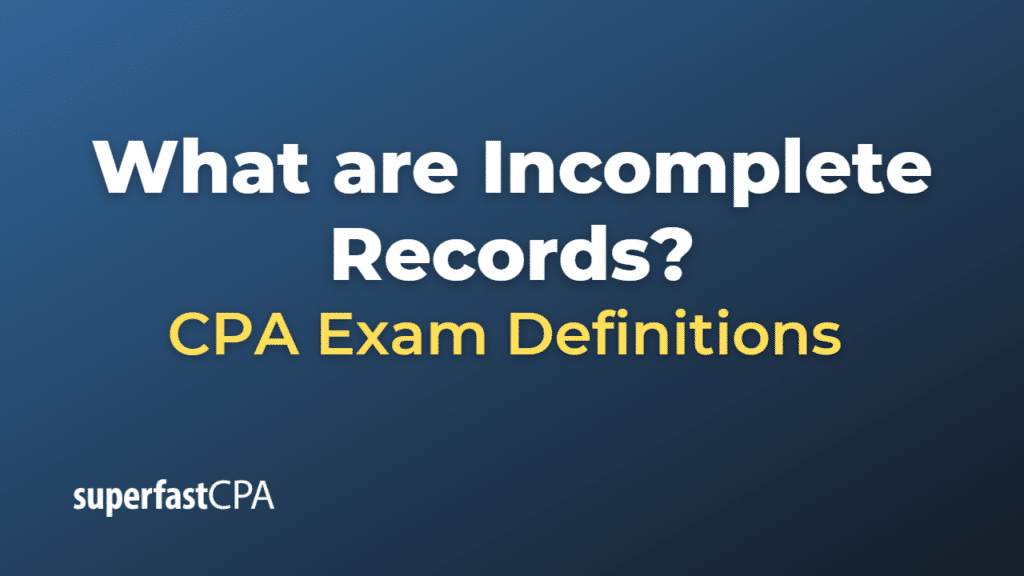Incomplete Records
Incomplete records, also known as single-entry bookkeeping, refers to a system of bookkeeping where a business does not maintain the complete double-entry accounting. In this case, a business does not maintain all the necessary detailed accounting records, such as ledgers for sales, purchases, returns, and so on. This might be due to lack of knowledge, negligence, or because the business is small and the transactions are not overly complex.
In a double-entry bookkeeping system, each financial transaction impacts at least two accounts. For example, if you purchase inventory with cash, you would decrease your cash account (credit) and increase your inventory account (debit). But with incomplete records or single-entry bookkeeping, you might only record the decrease in cash. This can make it more difficult to track where money was spent or to calculate accurate profit and loss.
While this system is less time-consuming and simpler, it has several disadvantages:
- It may not provide a complete picture of the financial situation of the business.
- It may not effectively track assets and liabilities.
- It could lead to errors or fraud being undetected.
- It does not conform to the Generally Accepted Accounting Principles (GAAP).
If a business has incomplete records and needs to prepare complete financial statements, a method called ‘statement of affairs’ is often used. This involves using whatever records are available, along with additional information from the business owner, to create a reasonable estimate of the business’s financial position. It’s often used for smaller businesses, but it’s not as accurate as a full set of accounts prepared using double-entry bookkeeping.
Example of Incomplete Records
Let’s consider a simplified example of a small business owner, John, who runs a local bakery.
John records only cash sales and cash expenses in his cash book. He doesn’t maintain ledgers for accounts receivable, accounts payable, inventory, or any other balance sheet accounts. John’s system of accounting is single-entry bookkeeping or incomplete records.
Here’s an example of what John’s cash book might look like for a given day:
| Date | Description | Cash In | Cash Out |
|---|---|---|---|
| Jan 1 | Cash Sales | $500 | |
| Jan 1 | Rent | $100 | |
| Jan 1 | Ingredients | $200 |
At the end of the day, John calculates his net cash position as follows:
Opening Cash: $0 Cash In (Sales): $500 Cash Out (Expenses): $300 Ending Cash: $200 ($500 – $300)
This simple system works for John’s daily operations. However, it doesn’t provide information about his debtors (people who owe him money), creditors (people he owes money to), the value of his inventory, or the value of his baking equipment. It also doesn’t allow him to calculate his profit or loss accurately because it doesn’t account for sales made on credit or expenses incurred but not yet paid.
If John needs to prepare full financial statements (for example, if he’s applying for a loan), he would need to use a statement of affairs to estimate the values of these missing accounts. For example, he might count his remaining inventory and estimate its value, or review his bank statements to identify any unpaid bills. This would allow him to create a balance sheet and an income statement, albeit less accurate than those prepared using double-entry bookkeeping.
Keep in mind that this is a highly simplified example. Real-world businesses, especially as they grow and their financial transactions become more complex, usually need to maintain a complete set of records and use double-entry bookkeeping to ensure accuracy and compliance with accounting standards.













